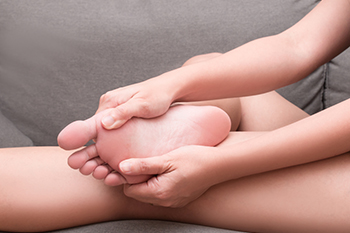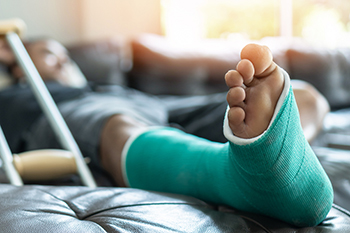
If you have sesamoiditis, you might feel some kind of inflammation in the ball of the feet. This condition occurs when the two sesamoid bones (located in the ball of the feet) become inflamed. If you think that you might have some form of sesamoiditis, consider scheduling an appointment with a podiatrist. Upon your visit, your podiatrist will be able to treat your condition and/or provide you with tips to mitigate it. For example, your podiatrist might recommend that you wear certain specific supportive footwear while exercising. Specifically, your podiatrist might recommend wearing a foot pad underneath the ball of the feet to support the sesamoid bones while working out. Additionally, depending on your condition and your regular exercise routine, your podiatrist might recommend that you maintain a healthy balance between high and low impact activities during exercise routines. Contact a podiatrist today for more information.
Sesamoiditis is an unpleasant foot condition characterized by pain in the balls of the feet. If you think you’re struggling with sesamoiditis, contact Terri Quebedeaux, DPM of Agave Podiatry . Our doctor will treat your condition thoroughly and effectively.
Sesamoiditis
Sesamoiditis is a condition of the foot that affects the ball of the foot. It is more common in younger people than it is in older people. It can also occur with people who have begun a new exercise program, since their bodies are adjusting to the new physical regimen. Pain may also be caused by the inflammation of tendons surrounding the bones. It is important to seek treatment in its early stages because if you ignore the pain, this condition can lead to more serious problems such as severe irritation and bone fractures.
Causes of Sesamoiditis
- Sudden increase in activity
- Increase in physically strenuous movement without a proper warm up or build up
- Foot structure: those who have smaller, bonier feet or those with a high arch may be more susceptible
Treatment for sesamoiditis is non-invasive and simple. Doctors may recommend a strict rest period where the patient forgoes most physical activity. This will help give the patient time to heal their feet through limited activity. For serious cases, it is best to speak with your doctor to determine a treatment option that will help your specific needs.
If you have any questions please feel free to contact our offices located in Seguin, LaVernia, Gonzales, and Lockhart, TX . We offer the newest diagnostic and treatment technologies for all your foot and ankle needs.









